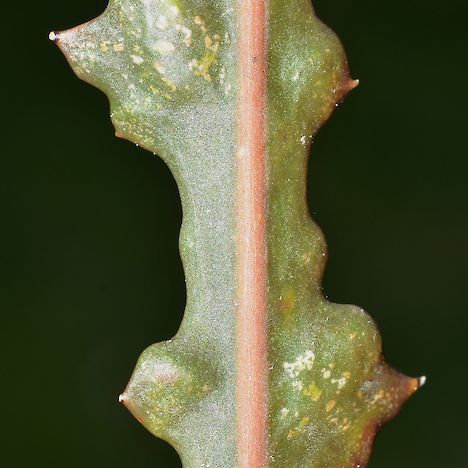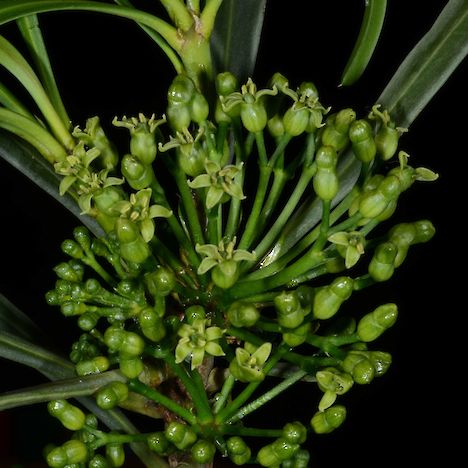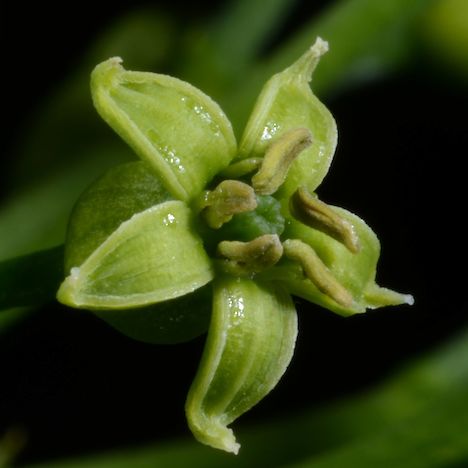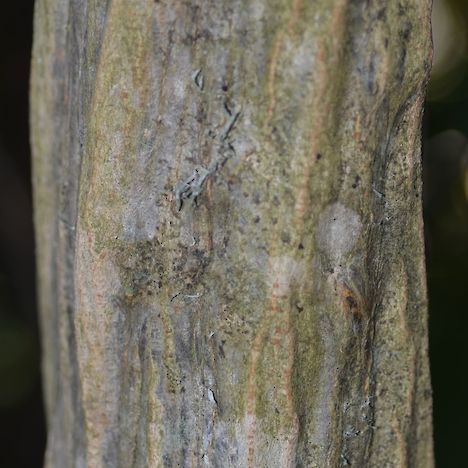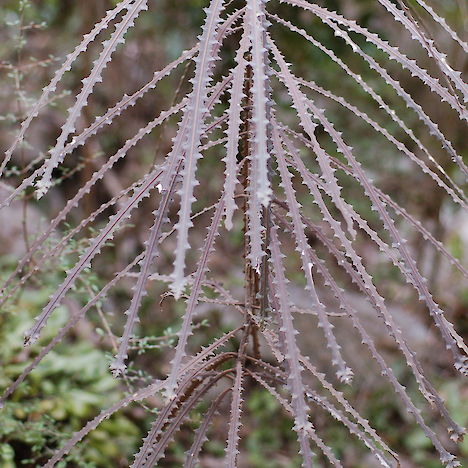Threat category:
At Risk: Naturally Uncommon?Regions:
Northland, Auckland, Waikato, Bay of Plenty, Gisborne, Hawkes Bay, Manawatu-Wanganui, Taranaki, Wellington, Nelson-Tasman, Marlborough, Westcoast, Canterbury, Otago, SouthlandDistribution:
North Island and South Island
Key Features
- Striking juvenile form with a usually single upright trunk up to 3-6 m tall, with downward-pointing, long, narrow, and tough leaves that have irregular blunt bumps along their edges.
- The adult form develops branches once it reaches 3-6 m tall and forms a branched, rounded head up to 8 m tall, bearing long, narrow, and leathery leaves that have a few teeth on the margin towards the tip.
- The purple fruit are 8-9 mm wide.
Distribution and Habitat
- Patchy distribution in North Island, but more widespread in eastern South Island.
- Coastal to subalpine (10-800 m above sea level).
- In coastal and lowland forest, grey scrub, on recent alluvial coarse gravels, limestone outcrops, boulder fall, cliff faces, talus slopes and scarps, and in seasonally drought-prone, but otherwise cold and wet, alluvial forests.
Threats
- Possum, deer and goat browse.
- Collection of seeds and plants.
- Potential hybridisation with P. lessonii at several northern populations.
Management Opportunities
- Survey for new locations.
- Mark known sites.
- Protect habitat.
- Collect seed, propagate, and reintroduce to appropriate sites.
- Pest animal control.
- Ensure that forest owners are aware of potential habitats and can recognise the species.
Monitoring Options
- Check existing populations annually.
- Report new locations to DOC.
Further Information and Support
- Weed and pest animal control - Department of Conservation, Regional Councils.
References
- New Zealand Plant Conservation Network (NZPCN). http://www.nzpcn.org.nz
- Poole & Adams (1994). Trees and shrubs of New Zealand. Maanaki Whenua Press, Lincoln.


